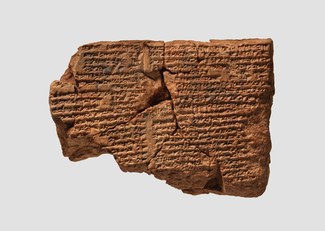Akkadian Ritual Texts in Mesopotamia
A multiyear project, Akkadian Ritual Texts in Mesopotamia, was initially supported by the National Endowment for the Humanities's Scholarly Editions and Translations funding opportunity. The main output of this project will be a published volume (the first of two) on Akkadian ritual texts in Mesopotamia. The project is led by Beate Pongratz-Leisten (ISAW) and Elizabeth Knott (College of the Holy Cross and ISAW Affiliated Researcher)—serving as primary authors. Kate Justement (ISAW Graduate) provides project management, copyediting, and research assistant services; Yu Song (ISAW Student) serves as graduate student research assistant.
The team's main goal is to provide editions of Akkadian ritual texts dating from ca. 2350–200 BCE, which showcase an enormous range of activities that took place within and beyond temples and cities across the ancient world. The editions will include transliterations and translations, as well as grammar notes. Additionally, each edition will include a critical apparatus in the form of historical introduction, discussion of material/archaeological evidence, and description of ritual performances—designed to appeal to a variety of researchers. Rituals are grouped together in thematic chapters, with each chapter including editions of multiple ritual texts. Each thematic chapter will have an introduction, as will the overall volume. The volume will also contain several appendices—including concordances of ritual texts, a grammar of ritual texts, and a glossary of deities and ritual terms—along with an index and bibliography.
Fig.1: Cuneiform tablet: Utukku lemnutu (tablet 12), with the description of a scapegoat ritual. MMA 86.11.367. Image courtesy The Metropolitan Museum of Art
Update on April 16, 2025: While NEH funding was issued for two years starting in October 2024, the grant was terminated in April 2025. Team members are currently looking for other ways to support the research and writing, careful editing and indexing, and associated publication costs. The College of the Holy Cross, a sub-awardee on the project, will cover the portion of the grant money allocated to the college in the subaward.